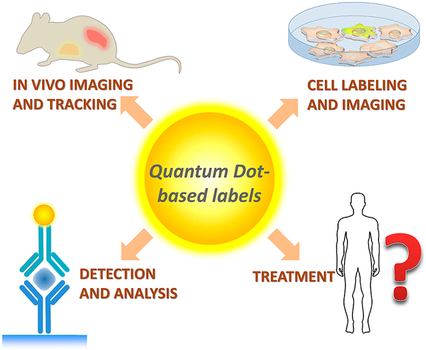Why in news?
Researchers at the Agharkar Research Institute (ARI) have developed a new process for the synthesis of quantum efficient and biocompatible quantum dots (QDs).
These Quantum Dots are used in capturing images of cellular organelles and processes within visible wavelength ranges across the electromagnetic spectrum.
Current Technology, and how Quantum Dots are better:
- Currently, bioimaging applications such as visualisation of cellular organelles, tracking cellular processes, etc. are reliant on traditional fluorophores which are fluorescent chemical compounds that can re-emit light upon excitation.
- These fluorophores are vulnerable to photobleaching, have low signal intensity, and overlapping spectra which restrict their use, particularly in multispectral bioimaging.
- Quantum Dots have advantages over traditional fluorophores in terms of quantum efficiency, photo- and chemical-stability and their toxicity can be tackled by a surface coating which also expands the possibility of the conjugation of various biomarkers while targeting different organelles during multispectral bioimaging.
Quantum dots
- Quantum dots (QDs) are man-made nanoscale crystals that that can transport electrons.
- When UV light hits these semiconducting nanoparticles, they can emit light of various colours.
- These artificial semiconductor nanoparticles that have found applications in composites, solar cells and fluorescent biological labels.





